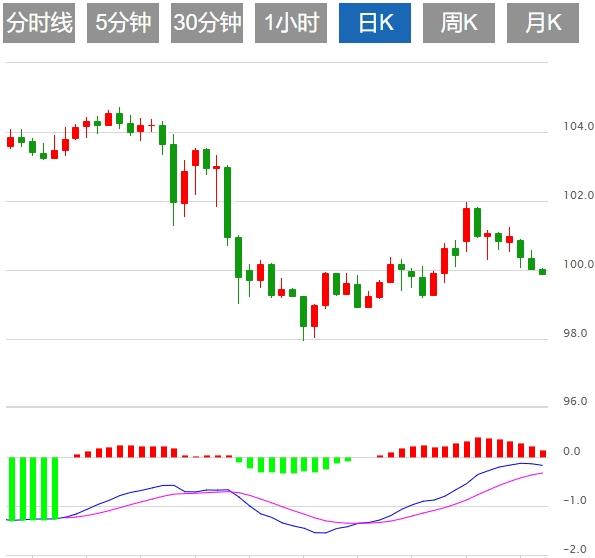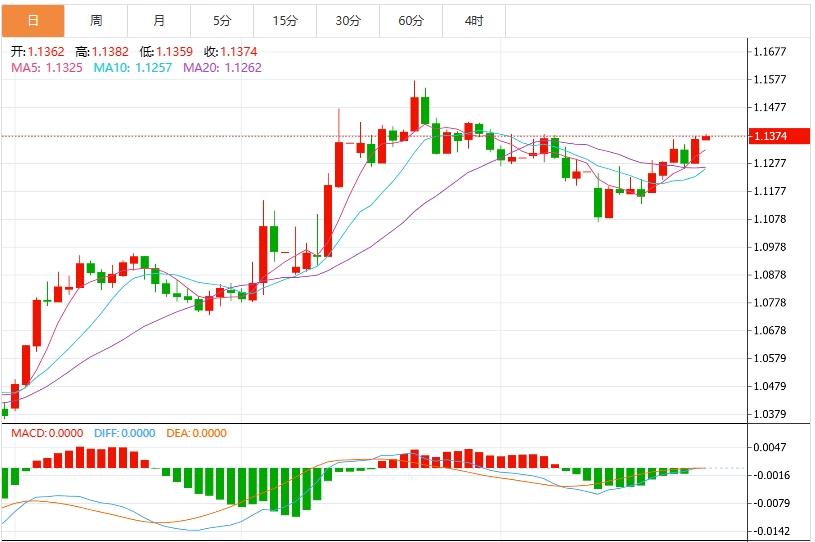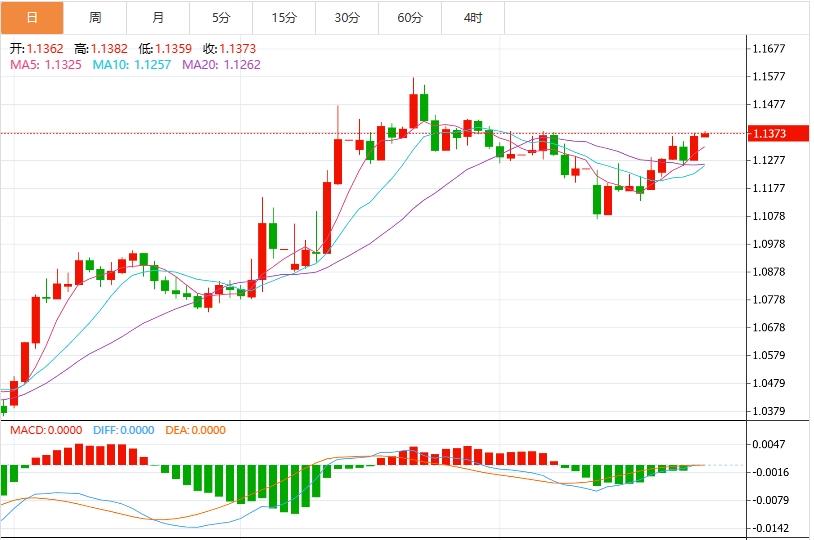Wonderful introduction:
Spring flowers will bloom! If you have ever experienced winter, then you will have spring! If you have dreams, then spring will definitely not be far away; if you are giving, then one day you will have flowers blooming in the garden.
Hello everyone, today Avatrade Aihua Foreign Exchange will bring you "[AvaTreade]: Trump once again issued a tariff threat, and the US dollar fell to a new low in a month." Hope it will be helpful to you! The original content is as follows:
On the Asian session on Monday, the US dollar index fluctuated and fell, and the US dollar fell across the board last Friday, after US President Trump once again threatened to escalate the trade war and suggested that a 50% tariff was imposed on the EU from June 1, and investors sold the US dollar one after another. This has once again raised concerns about the impact of tariffs on the world economy and global trade. The focus will be on the speech of the European Central Bank President Lagarde at the Herti Academy in Berlin during the day, and the European Central Bank Administration Nagel made a speech.
Analysis of major currency trends
Dollar: As of press time, the U.S. dollar index hovers around 99, and market participants will pay attention to www.avaforexcn.comments from Fed officials, as well as minutes of FOMC meetings, preliminary first-quarter GDP, core PCE price index, personal income and expenditure, durable goods orders, and www.avaforexcn.commodity trade balance. These data will be released this week to obtain new clues about the U.S. economic outlook and monetary policy direction. The daily chart of the US dollar index shows a significant downward trend. The adjustment of the exchange rate since the high of 109.8799 has evolved into a medium-term downward trend, and is currently testing key support areas around 99.20. From the analysis of the K-line pattern, the exchange rate has been falling below multiple important support levels, including the previous 100 integer mark, indicating strong bear momentum.



1. Trump went back on his word several times, and experts: trading partners bet that he is just "good at words".
IBD columnist pointed out that Trump gave a 90-day suspension of reciprocal tariffs on April 9. However, when the suspension period was halfway through, the United States had only reached a preliminary agreement with the United Kingdom. While Trump's recent trade attitude has shifted to appease the market, what will happen after the 90-day moratorium on peer tariffs ends? Trump said last week that few countries may reach a deal with the United States before the July 8 deadline. He said the trading partners should receive a letter in the next two to three weeks stating “what they are www.avaforexcn.com will pay for doing business in the United States”. On May 18, Becent said that countries that are insincerely negotiating will face reciprocal tariffs at the "April 2 level". He also raised the possibility of imposing regional tariffs rather than levied by country. But after Trump reneged on several occasions, trading partners may be betting on Trump onlyWill perform "mouth skills" again and will not put it into action.
2. Ukrainian bonds performed sluggishly due to the peace process. Markets from neighboring Eastern European countries soared
Ukrainian dollar bonds have caused investors more than 10% losses so far in 2025, the worst performance among emerging and frontier markets. And at the beginning of the year, some Ukrainian bond prices have almost doubled since reorganization in August last year and boosted the entire Eastern European market. London hedge fund FrontierRoad has turned to corporate bonds to avoid geopolitical risks. Although Bank of America maintained its over-allocation recommendation, it warned of the "downside risks" brought by the continued war. Morgan Stanley expects the conflict to continue until 2025. "The market has fallen back to pre-Trump's election level," said Viktor Szabo, director of Amber Investment. The major stock indexes of Warsaw, Prague and Budapest all exceeded 30% in the US dollar during the year, with Hungarian forin, Czech Krone and Polish Zloty leading the rise in emerging market currencies. But the price of Ukraine's zero-interest bonds due in 2035 has fallen to 50 cents from 70 cents in February.
3. Japanese tariff negotiator: Hope to meet with the US Treasury Secretary in the next talks
Japanese Economic Regeneration Minister Ryomasa Akazawa said on Sunday that the schedule for the next round of Japan-US trade negotiations will begin next week. Talks are still being arranged and he hopes to meet with U.S. Treasury Secretary Besent during his next visit. According to reports, Ryo Akasawa had just returned from Washington and spoke to reporters at Haneda Airport. He said an agreement will only be reached after all the problems are resolved as a whole. This means that nothing is reached until all issues are agreed upon. “So, I won’t www.avaforexcn.comment on how much progress we have made,” he said.
4. Poll: 56% of Americans say tariffs have increased the financial burden of families
People data from American institutions show that more than half of Americans say that the tariffs imposed by US President Trump on other countries have had a negative impact on their family financial situation. The survey data shows: "Most (56%) of adult Americans believe that if Trump's tariffs are not implemented, their families' financial situation will be better." The survey data shows that about 52% of respondents believe that the (government) promised economic benefits cannot offset economic losses. About 49% of respondents believe that imposing tariffs will have a negative impact on the US economy. According to the agency, 69% of American residents believe that the expropriation will lead to rising prices of daily necessities. The report pointed out that Trump himself foresaw such consequences. He said that American children may only get "two dolls" instead of the past thirty, because the price of dolls will be "a few dollars more expensive."
5. Japan intends to reach a tariff agreement with the United States before the G7 summit in June
Japanese Economic Regeneration Minister Ryomasato Akasawa said that his goal is to resolve the tariff negotiations in a timely manner before US President Trump and Japanese Prime Minister Shigeru Ishiba's meeting in June. Ryosa Akazawa meets in Washington on FridayAfter meeting U.S. www.avaforexcn.commerce Secretary Lutnik and U.S. Trade Representative Greer, he told reporters: "The leaders of both countries are looking forward to their meeting, which has been confirmed." "We will keep this in mind and do our best." Before his www.avaforexcn.comments, Trump and Shigeru Ishiba had a call, promising to meet during the G7 summit next month. Hours later, Trump said he agreed to a partnership between Nippon Steel and U.S. Steel (X.N).
Institutional View
1. Mitsubishi UF: The yen should continue to be supported by the prospect of rate hikes
Mitsubishi UF analyst Derek Halpenny said in a report that the yen should continue to be supported because Japan's latest inflation data should keep the possibility of another rate hike later this year. He said that although the outside world's expectations for the Bank of Japan's interest rate hike this year are not high, considering that other G10 central banks are cutting interest rates, the Bank of Japan's interest rate hike this year is also unique. This should put pressure on the dollar against the yen as "market participants are more convinced of the prospect of the Federal Reserve's further rate cuts later this year."
2. Deutsche Bank: Deficit inflation is the next major structural burden for the dollar
Worries about rising U.S. government debt continue to put pressure on the dollar after the U.S. House of Representatives passed Trump's tax and expenditure bill on Thursday, and the dollar fell. www.avaforexcn.commerzbank currency analyst Antje Praefcke said in a report that the bill aims to permanently reduce the tax cuts introduced by Trump, but the funds provided for it are unstable, so it can be assumed that the budget deficit will continue to expand. She said: "I'm curious when the market will realize that this is the next major structural burden of the US dollar."
3. ANZ: The RBI may cut interest rates three more times in 2025
The RBI research team said in a report that the RBI may cut interest rates three more times by the end of 2025. They wrote that given that inflation is not a problem at the moment, the current sluggish economic growth may mean that the RBI will need to continue to relax monetary policy. They added that if the January-March GDP figures were lower than expected, the RBI may have to lower its current fiscal year's growth forecast of 6.5%.
The above content is all about "[AvaTreade]: Trump once again issued a tariff threat, and the US dollar fell to a new low in a month". It was carefully www.avaforexcn.compiled and edited by the Avatrade Forex editor. I hope it will be helpful to your trading! Thanks for the support!
After doing something, there will always be experience and lessons. In order to facilitate future work, we must analyze, study, summarize and concentrate the experience and lessons of previous work, and raise it to the theoretical level to understand it.















